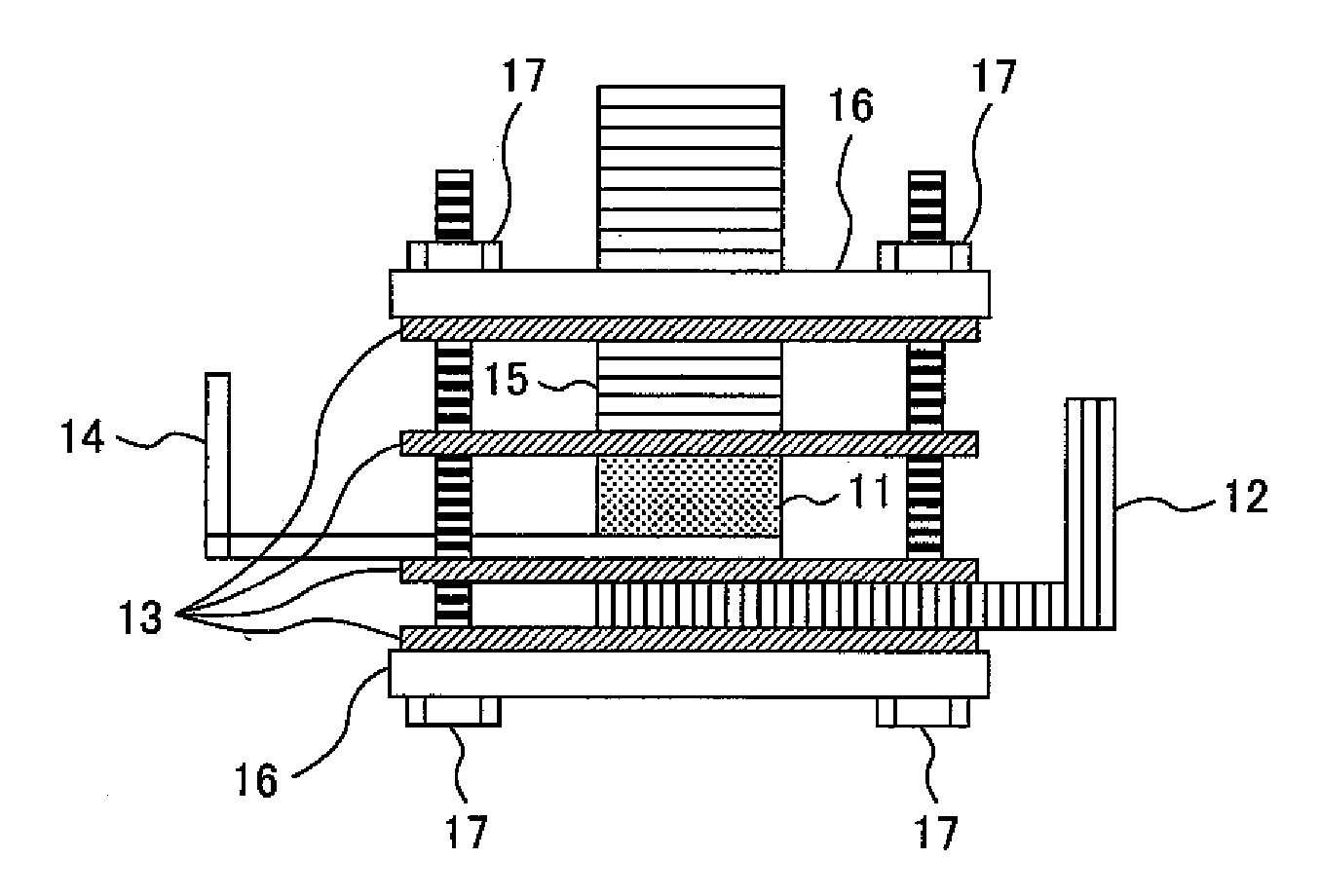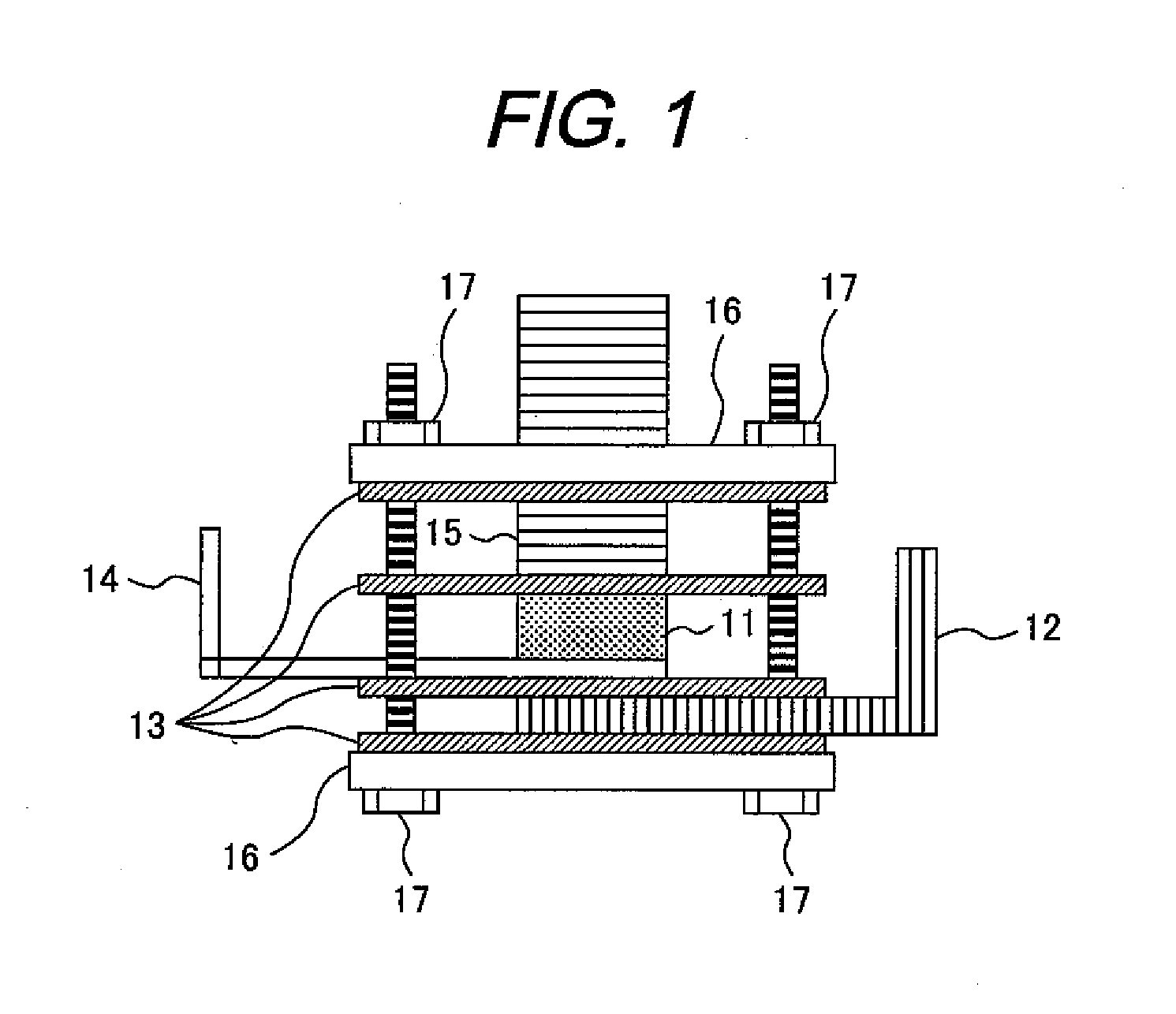Anode Material for Lithium Secondary Batteries and Lithium Secondary Batteries
a secondary battery and anode material technology, applied in the direction of non-aqueous electrolyte accumulator electrodes, cell components, electrical equipment, etc., to achieve the effect of small irreversible capacity
- Summary
- Abstract
- Description
- Claims
- Application Information
AI Technical Summary
Benefits of technology
Problems solved by technology
Method used
Image
Examples
embodiment 1
[0052]For synthesizing a core material for the anode active material, with an autoclave coal series coal tar was heat treated at 400° C. to obtain a raw coke. After crushing the raw coke, the crushed raw coke was calcinated at 1200° C. under an inert atmosphere and a coke lump having graphite inter layer distance (d002) of 0.345 nm was obtained. The coke lump was crushed by making use of an impact crushing machine with a classifier and coarse powders were removed with a sieve of 300 mesh to obtain carbon grains.
[0053]The carbon grains of 100 weight % were simply mixed with pitch of 15 weight % under an atmosphere of 100° C. and was temperature raised up to 1100° C. at a rate of 20° C. / hour, thereafter, the same was kept one hour to obtain the carbon grains for use. The obtained carbon grains were disintegrated by a cutter mill, thereafter, coarse powders were removed with a sieve of 300 mesh to obtain carbon grains. A ratio of volume V1 of pores having diameters from not less than 1...
embodiment 2
[0054]With the same process as in the embodiment 1 except that the charged amount of pitch for the simple mixing was altered from 15 weight % to 10 weight %, powders of carbon material was produced. A ratio of volume V1 of pores having diameters from not less than 1 nm to less than 10 nm in the produced carbon material with respect to volume V2 of pores having diameters from not less than 10 nm to less than 100 nm therein, in that V1 / V2=0.111 and the graphite inter layer distance (d002) thereof was 0.345 nm.
embodiment 3
[0056]The carbon grain of 100 weight %, pitch of 15 weight % and toluene of 30 weight % that was added so that the weight % of pitch assumes 15 weight % were mixed. after sufficiently mixing the mixture, the toluene was vacuum removed under an atmosphere of 100° C., and a complex body of carbon grain / pitch was produced. The produced carbon grains / pitch complex body was temperature raised up to 1100° C. at a rate of 20° C. / hour, thereafter, the same was kept one hour to obtain carbon grains. The obtained carbon grains were disintegrated by a cutter mill, thereafter, coarse powders were removed with a sieve of 300 mesh to obtain carbon grains. The carbon grains was temperature raised up to 900° C. at a rate of 20° C. / hour, thereafter, the same was kept one hour to obtain carbon grains. A ratio of volume V1 of pores having diameters from not less than 1 nm to less than 10 nm in the produced carbon material with respect to volume V2 of pores having diameters from not less than 10 nm to ...
PUM
| Property | Measurement | Unit |
|---|---|---|
| diameters | aaaaa | aaaaa |
| diameters | aaaaa | aaaaa |
| diameters | aaaaa | aaaaa |
Abstract
Description
Claims
Application Information
 Login to View More
Login to View More - R&D
- Intellectual Property
- Life Sciences
- Materials
- Tech Scout
- Unparalleled Data Quality
- Higher Quality Content
- 60% Fewer Hallucinations
Browse by: Latest US Patents, China's latest patents, Technical Efficacy Thesaurus, Application Domain, Technology Topic, Popular Technical Reports.
© 2025 PatSnap. All rights reserved.Legal|Privacy policy|Modern Slavery Act Transparency Statement|Sitemap|About US| Contact US: help@patsnap.com


